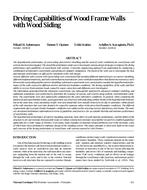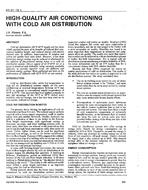Air pollution causes many health issues around the world; the World Health Organization estimates that 2 million people die each year from its effects. Increased indoor air pollution raises the risk of resipiratory and cardiovascular mortality. Monitoring air pollution and comparing the levels to the standards and guidelines can help raise awareness of building occupants. It would be beneficial to have small, accurate, reliable sensors for achieving healthy and comfortable air for building occupants. The objective of this study is to validate the sensitivity of a small, low-cost air quality sensor based on a series of experiments. A low-cost sensor that measures particulate matter was tested with laboratory grade sensors in different indoor environments. The sensors were tested in a controlled chamber setting, a low occupancy setting, and a high occupancy setting. The results show that airborne particle sensing accuracy varies with particle concentration, occupancy, and environmental conditions. The low-cost sensor responds to high particle concentrations associated with source emissions; however, the detection limits could be improved by sensor algorithm and calibration against specific reference particles. Nonetheless, the study results imply that the low-cost sensor system can enable rigorous indoor air quality monitoring and pollutant control in occupied spaces to achieve high performance buildings.
Citation: ASHRAE and AIVC IAQ 2016 Conf
Product Details
- Published:
- 2016
- Number of Pages:
- 7
- Units of Measure:
- Dual
- File Size:
- 1 file , 850 KB
- Product Code(s):
- D-2016IAQ-50


